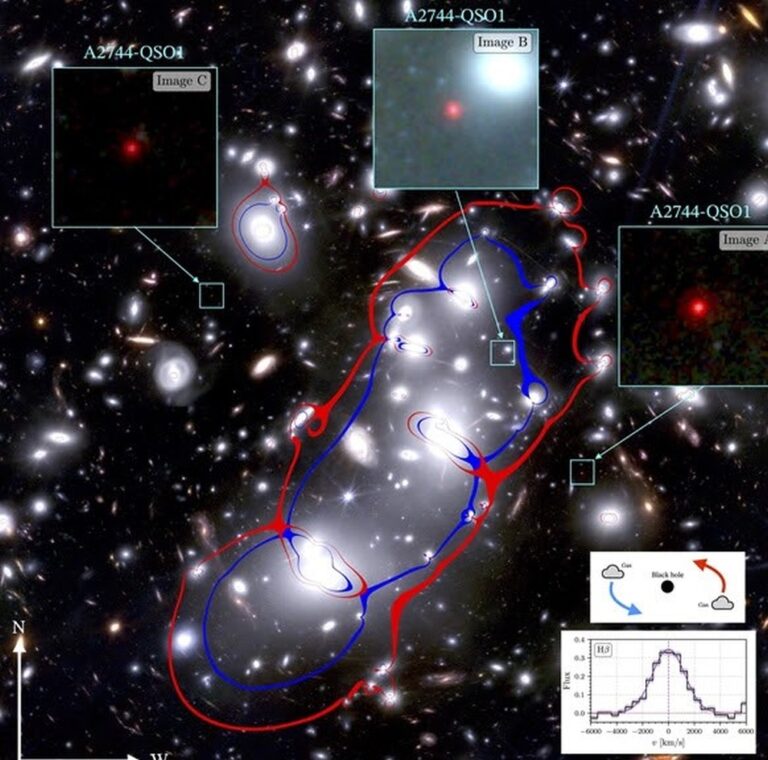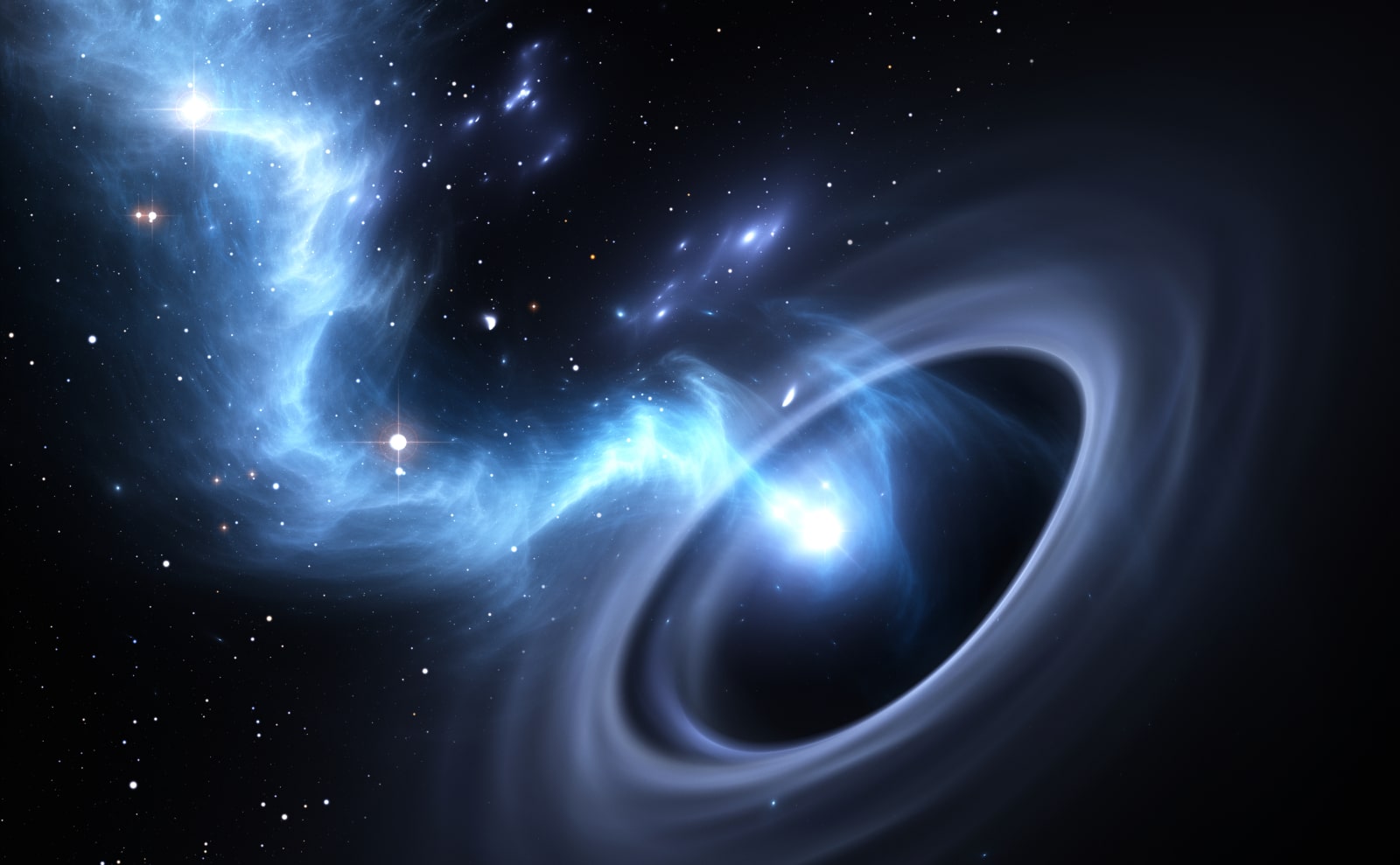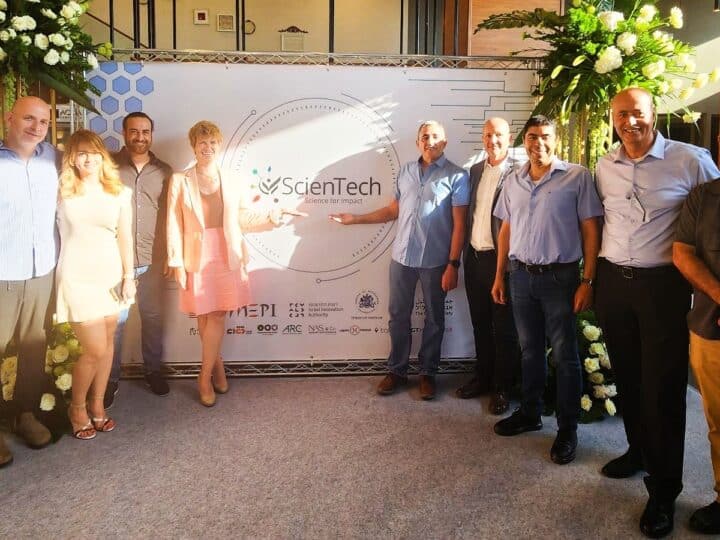An “extremely red” supermassive black hole in the early universe has been detected by astronomers from Ben Gurion University of the Negev, after analyzing images from the James Webb Space Telescope (JWST).
Located around 12.9 billion light-years away from Earth, the black hole is seen on the JWST images as it appeared around 700 million years after the Big Bang. The scientists said its unusual color is due to the black hole’s position behind a thick veil of dust and gas, which obscures much of its light.
The images depicting the celestial entity were initially taken for JWST‘s UNCOVER program, which imaged the field of a cluster of galaxies, called Abell 2744, at an unprecedented depth.
Since the cluster contains large amounts of mass, it bends spacetime, creating a gravitational lens. The lens magnifies the background galaxies behind it, allowing astronomers to observe even more distant galaxies than otherwise possible.
“We were scanning the data, and three very compact, red-blooming objects prominently stood out and caught our eyes,” said Lukas Furtak, a postdoctoral researcher at BGU and the lead author of the discovery papers.

“Their appearance immediately led us to suspect that it was a quasar,” he added. Quasars are luminous galactic cores, where gas and dust fall into a supermassive black hole and emit radiation across the entire electromagnetic spectrum.
The astronomy team, led by Furtak and Adi Zitrin, also managed to measure the mass of the black hole. They discovered it was 40 million times the mass of the sun, significantly bigger compared to the host galaxy’s mass.
The discovery of the uniquely red object was published last year in the Astrophysical Journal. But, the object was only verified to be a supermassive massive black hole after the three images were acquired from the JWST.
The findings also indicate the black hole is rapidly growing. Astronomers, however, still don’t know if such supermassive black holes grow from stellar remnants, or perhaps from material that directly collapsed into black holes in the early universe.
“In a way, it’s the astrophysical equivalent of the chicken and egg problem,” said Zitrin. “We do not currently know which came first – the galaxy or black hole, how massive the first black holes were, and how they grew.”
















